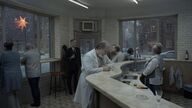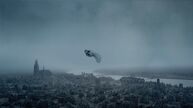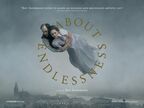After watching this film, I have more ideas about Andersson's diorama series of films. There are a lot of things to say, but they must be based on the evidence in the text - space, in order to expand.
The diorama film constructed by Anderson must firstly fall into the paradigm of site-seeing, topophilia, cine-city, e-motion, etc. that Bruno refers to, but not so much about real or extratextual locus. ), the "journey" of the people in the film is very inconspicuous, at best only "moving", and almost all of them are "moving" in the same painting.
The cinematic diorama and the space in it are not "established", that is, they are not built up one by one by means of the so-called set-up, front and back shots, etc., but are directly "given" in a complete form. kind of preexistent space. This being the case, reference lines to aid perspective must be arranged in every painting, even if it is not a true geometric form of walls, ponds and queues.
The space in a perspective painting is always a transparent/interpenetrating space: there are many roads leading out of the frame. The secondary characters can stand still, move, come and go, but the main characters tend to come and go, and the movement (and emotion, which is e-motion) of the latter is always sluggish, offset, reversed. Directional, destructive - they are "sticky" in the painting and try to reject.
Based on these basic spatial relationships (to be further refined), it may be possible to develop a concrete examination of the order of the life world, the historical-political-social context, and other metaphors; "s position. These of course require more careful reading.
View more about About Endlessness reviews








